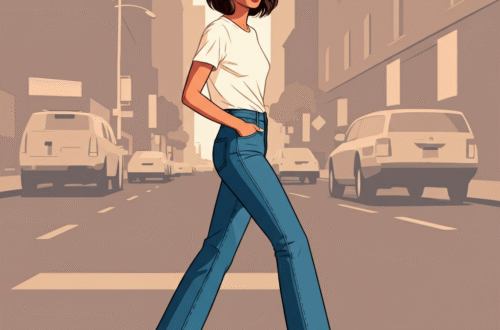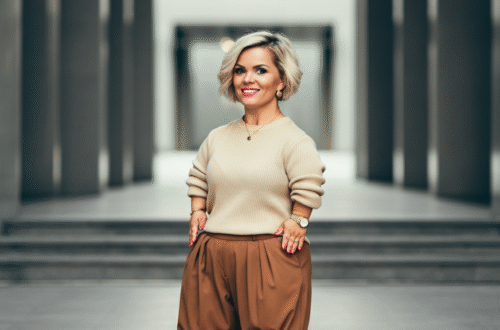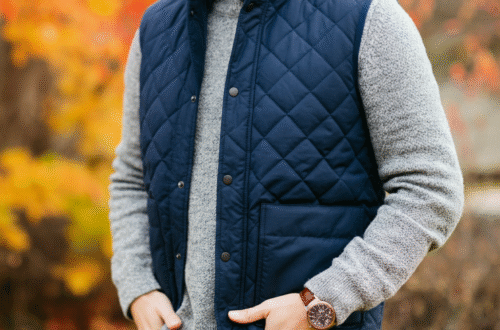Finding your authentic fashion sense can feel overwhelming with endless trends and options everywhere. Yet discovering your personal style is one of the most empowering journeys you can take. Your true fashion style reflects who you are, boosts your confidence, and makes getting dressed effortless. This guide will walk you through proven strategies to uncover your unique aesthetic and create a wardrobe you absolutely love.
Understanding Personal Style vs. Fashion Trends
What Makes Personal Style Different
Personal style is your unique way of expressing yourself through clothing choices. Unlike fleeting fashion trends that change seasonally, your personal style evolves slowly and reflects your personality, lifestyle, and values. It’s the consistent thread that runs through your wardrobe choices, making you instantly recognizable.
Fashion trends come and go, but your personal style creates a foundation for confident dressing. When you understand this difference, you can selectively incorporate trends that align with your aesthetic while ignoring those that don’t serve you. This approach saves money and creates a more cohesive wardrobe.
Your style should feel authentic and comfortable. If you’re constantly adjusting your outfit or feeling self-conscious, the clothing isn’t reflecting your true style. The right pieces will feel like a second skin, allowing your personality to shine through naturally.
Discovering Your Style Personality
Identifying Your Core Aesthetic
Start by examining your current wardrobe without judgment. Which pieces do you reach for repeatedly? What makes you feel most confident? These favorites often reveal patterns about your preferred colors, silhouettes, and textures. Pay attention to compliments you receive – they usually highlight when your outfit truly represents you.
Consider your lifestyle demands when defining your style personality. A corporate professional needs different pieces than a freelance artist, but both can express their authentic selves within their context. Your style should support your daily activities while making you feel genuinely yourself.
Look beyond clothing to other areas where you make aesthetic choices. How do you decorate your living space? What type of music do you enjoy? Your style preferences often carry consistent themes across different areas of life, creating a clearer picture of your aesthetic identity.
Common Style Personalities
Classic Style lovers prefer timeless pieces, neutral colors, and clean lines. Think tailored blazers, crisp white shirts, and quality basics that never go out of style. This aesthetic values sophistication and refinement over trendy elements.
Romantic Style embraces feminine details like flowing fabrics, floral prints, and soft colors. Lace, ruffles, and delicate jewelry appeal to this aesthetic. The overall look feels gentle and graceful.
Edgy Style incorporates bold elements like leather jackets, dark colors, and statement accessories. This aesthetic isn’t afraid of contrast or unconventional combinations. It often includes elements inspired by rock, punk, or street style.
Bohemian Style celebrates free-spirited elements like flowing silhouettes, earthy colors, and mixed patterns. Natural fabrics, vintage pieces, and artisanal details define this relaxed aesthetic.
Analyzing Your Lifestyle and Needs
Matching Style to Daily Life
Your true fashion style must work with your actual lifestyle, not an imaginary one. Consider how much time you spend in different settings – office, home, social events, or outdoor activities. A realistic style assessment includes practical considerations alongside aesthetic preferences.
Climate plays a crucial role in defining your authentic style. Someone in tropical weather will develop different style preferences than someone facing harsh winters. Embrace your environment rather than fighting it, finding creative ways to express your aesthetic within practical constraints.
Budget considerations affect style development significantly. Authentic style isn’t about expensive pieces – it’s about making thoughtful choices that reflect your personality. Focus on building a foundation of versatile pieces that can be mixed, matched, and accessorized in multiple ways.
Consider your body type and what makes you feel confident. True style enhances your natural attributes rather than hiding them. When you feel comfortable in your clothes, that confidence becomes part of your style signature.
Building Your Color Palette
Finding Your Best Colors
Understanding which colors complement your skin tone, hair, and eyes creates a foundation for cohesive style. Start by examining which colors receive compliments and which make you look tired or washed out. This natural feedback reveals your most flattering palette.
Seasonal color analysis can provide structure, but trust your instincts too. If you feel amazing in a color that theoretically doesn’t suit you, include it in your palette. Confidence often trumps color theory rules.
Consider creating a signature color that becomes associated with your personal brand. This doesn’t mean wearing only one color, but having a consistent element that appears regularly in your outfits. Many stylish people are known for their affinity for certain colors.
Neutral colors form the backbone of most successful wardrobes. Identify which neutrals work best for you – warm browns and creams, cool grays and navy, or classic black and white. These colors should feel natural and flattering when you wear them.
Exploring Different Style Categories
Traditional Style Categories
Minimalist Style focuses on clean lines, neutral colors, and fewer, higher-quality pieces. This aesthetic values simplicity and functionality over decoration. The overall look feels uncluttered and sophisticated.
Maximalist Style embraces bold patterns, bright colors, and statement pieces. This aesthetic isn’t afraid of mixing different elements for dramatic effect. The key is creating intentional chaos that feels cohesive despite its complexity.
Vintage Style draws inspiration from specific historical periods. Whether you prefer 1950s feminine silhouettes, 1970s bohemian elements, or 1990s grunge aesthetics, vintage style creates unique looks by reimagining past trends.
Modern Style incorporates contemporary design elements and current silhouettes. This aesthetic stays current without chasing every trend, selecting modern pieces that align with personal preferences.
Blending Different Influences
Most people don’t fit neatly into one style category. Your true fashion style might blend elements from several aesthetics, creating something uniquely yours. This mixing requires a consistent thread – perhaps a preferred color palette, silhouette preference, or design philosophy.
Document combinations that work well for future reference. When you create an outfit that feels authentically you, note the specific elements that made it successful. This builds a personal style vocabulary you can reference when shopping or getting dressed.
Creating Your Style Mood Board
Visual Inspiration Gathering
Start collecting images of outfits, colors, and pieces that appeal to you. Use Pinterest, Instagram, magazines, or any visual medium that resonates. Don’t judge your choices initially – just gather everything that catches your eye.
After collecting 50-100 images, look for patterns. What colors appear most frequently? What silhouettes do you gravitate toward? Which styling techniques appeal to you? These patterns reveal your true style preferences better than conscious analysis alone.
Create both digital and physical mood boards. Digital boards are convenient for adding images quickly, while physical boards using magazine cutouts can reveal different insights. Some people respond better to tangible inspiration they can touch and arrange.
Include lifestyle images alongside fashion ones. Pictures of beautiful homes, travel destinations, or artistic elements that inspire you can reveal aesthetic preferences that translate to fashion choices.
The Role of Body Type in Style Development
Dressing for Your Shape
Understanding your body type helps you choose silhouettes that enhance your natural proportions. However, body type guidelines should enhance your style preferences, not dictate them entirely. If you love a particular silhouette, find ways to adapt it that work for your body.
Focus on fit over size. Well-fitted clothing in any silhouette looks better than poorly fitted pieces in “flattering” cuts. Invest in alterations for important pieces to achieve the perfect fit that supports your style vision.
Consider proportion and balance when creating outfits. This doesn’t mean following rigid rules, but understanding how different combinations affect your overall appearance. Experiment with different proportions to see what feels most authentic to you.
Remember that confidence is the most flattering element of any outfit. When you feel good in your clothes, that positive energy becomes part of your style signature. Choose pieces that make you feel empowered and authentic.
Shopping Strategies for Style Development
Building vs. Buying
Develop a strategic approach to building your wardrobe rather than buying impulsively. Create a list of needed pieces based on your lifestyle analysis and style preferences. This prevents duplicate purchases and ensures new additions work with existing pieces.
Quality often matters more than quantity when developing authentic style. A few well-made pieces that perfectly represent your aesthetic serve you better than numerous mediocre items that don’t feel quite right.
Try before you buy whenever possible. Online shopping is convenient, but physically trying pieces helps you understand how they work with your body and existing wardrobe. This reduces returns and buyer’s remorse.
Consider cost per wear when evaluating purchases. A more expensive piece you’ll wear frequently often provides better value than cheaper items that rarely leave your closet.
|
Shopping Approach |
Pros |
Cons |
Best For |
|---|---|---|---|
|
Trendy Fast Fashion |
Affordable, current |
Poor quality, environmental impact |
Experimental pieces |
|
Investment Pieces |
High quality, timeless |
Expensive upfront |
Wardrobe foundations |
|
Secondhand/Vintage |
Unique finds, eco-friendly |
Time-consuming, limited sizes |
Creative, budget-conscious |
|
Capsule Wardrobe |
Cohesive, minimalist |
Limited variety |
Busy lifestyles |
Experimenting with Accessories
The Power of Details
Accessories offer the easiest way to experiment with style without major investment. Scarves, jewelry, bags, and shoes can completely transform basic outfits, helping you explore different aesthetics safely.
Start with one statement accessory per outfit and build your confidence gradually. A bold necklace with simple clothing or colorful shoes with a neutral outfit can express your style personality without overwhelming your look.
Consider accessories as your style signature. Maybe you always wear interesting earrings, collect vintage scarves, or have an amazing shoe collection. These consistent elements become part of your recognizable style identity.
Quality accessories often provide better value than clothing investments. A beautiful bag or classic watch can elevate numerous outfits for years, making them worthwhile additions to your style arsenal.
Learning from Style Icons
Finding Inspiration Without Copying
Study people whose style you admire, but focus on understanding why their looks work rather than copying them exactly. What principles do they follow? How do they combine colors? What silhouettes do they prefer? These insights help you develop your own aesthetic.
Look for style icons who share your body type, lifestyle, or aesthetic preferences. Their styling choices often translate better to your own wardrobe than trying to emulate someone with completely different circumstances.
Modern style inspiration comes from many sources – social media influencers, street style photography, classic Hollywood icons, or even fictional characters. Cast a wide net when seeking inspiration, then filter through your personal preferences.
According to truefashionstory.comBlog, following diverse style influences prevents you from developing a narrow aesthetic vision. Exposure to different approaches helps you identify what truly resonates with your personal taste.
The Psychology of Color in Fashion
How Colors Affect Your Style
Colors carry psychological associations that influence how others perceive you and how you feel about yourself. Understanding these associations helps you use color strategically to support your style goals and personality expression.
Warm colors like red, orange, and yellow tend to feel energetic and confident. Cool colors like blue, green, and purple often feel calming and professional. Neutrals provide balance and sophistication. Consider how different colors align with your personality and goals.
Your relationship with color might change over time. Colors you avoided in the past might feel appealing now, while former favorites might no longer resonate. Regular color palette evaluation ensures your style continues reflecting your current self.
Cultural and personal associations also influence color preferences. A color connected to positive memories might become part of your signature style, while negative associations might make certain colors feel wrong regardless of how they look on you.
Maintaining Your Style Evolution
Allowing Growth and Change
Your true fashion style isn’t static – it should evolve as you grow and change. Regular style check-ins help ensure your wardrobe continues serving your current lifestyle and aesthetic preferences rather than who you used to be.
Document your style journey through photos or a style journal. This helps you recognize patterns in your preferences and identify when you’re ready for evolution versus when you’re being influenced by temporary trends.
Seasonal closet reviews provide opportunities to assess what’s working in your current wardrobe. Items you haven’t worn might indicate style evolution, poor fit, or pieces that never truly aligned with your authentic aesthetic.
Stay open to new influences while maintaining your core style identity. You might discover new colors you love, silhouettes that work for your changing body, or lifestyle shifts that require wardrobe adjustments.
Key Takeaways
Finding your true fashion style is a journey of self-discovery that combines practical considerations with aesthetic preferences. Start by analyzing your lifestyle, body type, and color preferences to create a foundation for authentic style development.
Experiment with different style categories and influences, but always filter choices through your personal preferences and lifestyle needs. Your authentic style should feel effortless and confident, not forced or uncomfortable.
Build your wardrobe strategically, focusing on quality pieces that work together rather than buying impulsively. Use accessories to experiment with new looks and express different aspects of your personality.
Remember that style evolution is natural and healthy. Allow your aesthetic to grow with you while maintaining the core elements that make you feel authentically yourself.
Frequently Asked Questions
How long does it take to find your true fashion style?
Finding your authentic style typically takes 3-6 months of conscious effort, but style development is an ongoing process. Most people need time to experiment, make mistakes, and refine their preferences before feeling confident in their aesthetic choices.
Can you have multiple style personalities?
Absolutely! Most people blend elements from different style categories to create their unique aesthetic. You might prefer classic pieces for work, bohemian elements for weekends, and edgy accessories for special occasions.
What if my body type doesn’t suit my preferred style?
Every body type can adapt any style preference with the right approach. Focus on fit, proportion, and confidence rather than rigid style rules. Work with a stylist if needed to find ways to express your aesthetic authentically.
How do I know if a trend works with my personal style?
Ask yourself if the trend aligns with your core aesthetic preferences, lifestyle needs, and budget. If it enhances your existing style rather than completely changing it, the trend might be worth incorporating.
Should I completely replace my wardrobe when developing personal style?
No! Start by identifying pieces in your current wardrobe that align with your style vision. Build upon these favorites while gradually replacing items that don’t serve your authentic aesthetic. This approach is more sustainable and budget-friendly.





